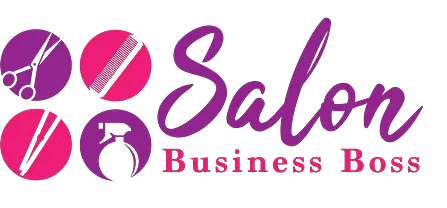In the competitive and dynamic world of the beauty industry, hair salons play a crucial role in catering to the ever-evolving needs of customers seeking stylish haircuts, color treatments, and various hair care services. One critical aspect that significantly impacts the success and sustainability of hair salons is their profit margin. A profit margin is a financial metric that reflects the percentage of revenue a business retains as profit after covering all expenses.
A profit margin for a hair salon can fluctuate significantly, ranging from 2% to 17%. Factors like location, services offered, operating expenses, and employee efficiency play vital roles in determining the salon’s profitability. By diversifying services, cost-effective marketing, and prioritizing customer retention, salon owners can optimize their profit margins and ensure long-term success.
Factors Influencing Profit Margins in Hair Salons
1. Location and Rent

The location of a hair salon is a critical factor that can make or break its profitability. Establishing a salon in a prime area with high foot traffic and a dense population can significantly impact its revenue-generating potential. Such locations provide greater visibility to potential customers and increase the chances of walk-in clients, boosting the salon’s overall business.
In contrast, salons located in less frequented areas face the challenge of attracting customers. Without adequate foot traffic and visibility, these salons may struggle to build a consistent customer base. As a result, they might face reduced revenue streams, leading to potential financial difficulties.
Another aspect closely linked to location is the rental expenses. Prime areas with high demand tend to have higher rent costs, which can put pressure on the salon’s profit margin. Salon owners must carefully evaluate the balance between location benefits and rental expenses to ensure that the business remains financially viable.
While operating in a desirable location can bring advantages, it is not always feasible for every salon to secure such a spot. In such cases, salon owners can explore alternative strategies to attract customers, such as strategic marketing, online presence, and engaging social media campaigns. Additionally, offering exceptional services and building a loyal customer base can help offset the challenges posed by the location.
The location of a hair salon plays a pivotal role in shaping its profitability. A prime location with high foot traffic can lead to increased business and higher revenues. However, salon owners must carefully assess rental costs and explore creative ways to attract customers in less frequented areas to maintain a healthy profit margin and achieve long-term success.
Read more about: Setting Up a Hair Salon: Practices and Strategies
2. Services and Pricing
The range of services offered by a hair salon is a critical factor that directly impacts its profit margin. A salon with a diverse and comprehensive menu of services, such as haircuts, styling, coloring, extensions, and treatments, stands a better chance of attracting a broader customer base and, subsequently, generating more revenue.
By providing a variety of services, the salon can cater to the unique preferences and needs of different customers, ensuring a steady flow of clients seeking specialized treatments. This not only increases the potential for repeat business but also encourages positive word-of-mouth referrals, contributing to the salon’s overall growth and profitability.
However, simply offering an array of services is not enough. Setting competitive yet profitable pricing for these services is equally crucial. Underpricing may initially attract a higher volume of customers, but it can lead to reduced profit margins in the long run. Operating at razor-thin profit margins might hinder the salon’s ability to invest in quality products, equipment, and staff training, ultimately compromising service excellence.
On the other hand, overpricing services could deter potential clients and limit the salon’s customer base, resulting in stagnant growth and reduced revenue. Striking a balance between competitive pricing and maintaining profit margins is vital. Salons must consider factors like market demand, regional competition, and the perceived value of their services when determining pricing strategies.
To optimize profit margins, salon owners should regularly review and adjust their service offerings and pricing. They must stay attuned to market trends and customer feedback, seeking a sweet spot where quality services, competitive prices, and profitability converge. By continuously refining their service and pricing strategies, hair salons can not only attract a diverse clientele but also ensure sustainable success in the highly competitive beauty industry.
3. Operating Expenses
Operating expenses form a critical component of a hair salon’s profit margin equation. These expenses encompass various aspects of daily operations, including employee wages, utility bills, inventory costs, salon maintenance, and other overheads. Efficient cost management is essential for optimizing profit margins and ensuring the salon’s financial health.
To maintain a healthy profit margin, salon owners should closely monitor these expenses and identify areas where potential savings can be made. Implementing energy-efficient practices, negotiating favorable supplier deals, and utilizing cost-effective inventory management techniques can all contribute to reducing operational expenses.
Analyzing and optimizing resource allocation is also vital. Ensuring that resources are used efficiently and allocated appropriately can minimize waste and lead to better financial outcomes. By regularly assessing and reevaluating operating expenses, salon owners can make informed decisions that positively impact the bottom line.
4. Workforce Efficiency
The competence and efficiency of salon employees significantly influence a salon’s profitability. Highly skilled and experienced stylists can attract more customers and command higher service charges, contributing to increased revenue. Satisfied clients are more likely to return for future services and recommend the salon to others, fostering a loyal customer base and enhancing profitability.
On the other hand, a high turnover of staff can negatively impact a salon’s reputation and profitability. Constantly training and onboarding new employees not only incurs costs but can also lead to inconsistencies in service quality. Ensuring a stable and motivated workforce is vital for maintaining customer satisfaction and maximizing revenue.
To optimize workforce efficiency, salon owners should invest in employee training and development programs. Providing continuous opportunities for skill enhancement can empower stylists to stay up-to-date with industry trends and offer cutting-edge services that attract more clientele. Additionally, fostering a positive work environment that recognizes and rewards employee efforts can contribute to staff retention and overall business success.
Strategies for Improving Profit Margins
1. Service Diversification and Upselling:

To boost profit margins, hair salon owners have various strategies at their disposal, one of which is diversifying their service offerings. By expanding their menu of services, salon owners can cater to a wider audience, attracting more customers and increasing revenue streams. Introducing new and trending services, such as specialized hair treatments, extensions, or unique styling options, can set the salon apart from competitors and establish it as a go-to destination for cutting-edge beauty services.
Staying updated with the latest beauty trends is crucial for salon owners looking to maintain relevance in the industry. By understanding and incorporating popular trends, salons can differentiate themselves and attract a broader customer base, including those seeking contemporary and innovative services.
Another effective way to boost profitability is by encouraging stylists to upsell services or retail products during client interactions. Skilled stylists can identify additional services or hair care products that complement customers’ initial requests, enhancing their overall experience. By offering personalized recommendations tailored to individual needs, the salon can increase sales without incurring significant additional expenses.
Effective upselling not only increases revenue per customer but also fosters loyalty and customer satisfaction. When clients perceive the salon as attentive to their needs and genuinely invested in their hair care journey, they are more likely to become repeat customers and advocates for the salon, generating positive word-of-mouth referrals.
Incorporating both diversification and upselling strategies can lead to a substantial increase in the salon’s profitability. By continually expanding and refining their service offerings and capitalizing on customer interactions to upsell relevant services and products, hair salon owners can achieve sustainable growth and success in the competitive beauty industry.
Read more about: Sunlit Profits: Potential of Tanning Salons
2. Cost-Effective Marketing:
In the competitive beauty industry, cost-effective marketing is crucial for reaching potential customers and retaining existing ones. Leveraging digital marketing channels, such as social media platforms, email campaigns, and a well-designed website, can effectively promote the salon’s services to a broader audience.
Implementing loyalty programs and referral incentives is an excellent way to encourage customer retention. Rewarding loyal customers for their continued support and encouraging them to refer friends and family can result in increased customer loyalty and a steady stream of new clients.
3. Efficient Inventory Management:
Proper inventory management can positively impact a salon’s profit margin by reducing waste and unnecessary expenses. Salon owners should closely monitor product usage and demand patterns to avoid overstocking items that may expire or go unused. Negotiating favorable deals with suppliers and purchasing in bulk can also lead to cost savings on inventory.
4. Employee Training and Development:
Investing in continuous training and development for salon staff is an investment in the salon’s success. By enhancing the skills and expertise of stylists, salon owners can ensure that customers receive high-quality services, leading to greater customer satisfaction and loyalty.
Satisfied customers are more likely to become repeat clients and recommend the salon to others, contributing to increased revenue and higher profit margins. Creating a supportive and nurturing work environment that encourages staff growth and recognition can also boost employee morale and dedication.
5. Customer Retention Strategies:
Acquiring new customers can be costly and time-consuming. Therefore, implementing customer retention strategies is vital for long-term profitability. Loyalty programs, offering exclusive discounts or rewards to frequent customers, can incentivize repeat visits and foster loyalty.
Referral incentives, where customers are rewarded for referring new clients to the salon, can generate a steady stream of new customers without substantial marketing expenses. Personalizing services and providing exceptional customer experiences can also leave a lasting impression, encouraging customers to return and recommend the salon to others.
In conclusion, adopting strategies such as service diversification, cost-effective marketing, efficient inventory management, employee training, and customer retention initiatives can significantly enhance a hair salon’s profit margins. By combining these approaches with excellent customer service, salons can achieve sustainable growth and financial success in the competitive beauty industry.
Conclusion
Profit margins in hair salons can vary significantly based on a myriad of factors, including location, services offered, pricing, operating expenses, and employee efficiency. Salon owners should focus on strategies to optimize their profit margins, such as diversifying services, implementing cost-effective marketing, and improving inventory management. Prioritizing employee training and customer retention can also foster a positive business environment that boosts profitability. By understanding these factors and applying appropriate strategies, hair salon owners can navigate the challenges of the beauty industry and achieve sustainable financial success.
Frequently Asked Questions

1. What impact does customer feedback have on profit margins?
Customer feedback is valuable for improving services and addressing issues promptly. Satisfied clients are more likely to become loyal patrons, positively affecting margins.
2. How can salon owners stay financially informed?
Salon owners should maintain accurate financial records, analyze profit and loss statements, and seek professional advice to make informed decisions that boost margins.
3. Are there seasonal fluctuations in profit margins?
Yes, profit margins may vary seasonally due to changing customer demand and industry trends. Salon owners should adapt their strategies accordingly to maintain profitability.
To learn more on how to start you own salon checkout my startup documents here.
Please note that the contents of this blog are for informational and entertainment purposes only and should not be construed as legal advice. Any action taken based on the information provided in this blog is solely at your own risk. Additionally, all images used in this blog are generated under the CC0 license of Creative Commons, which means they are free to use for any purpose without attribution.

About the author. Entrepreneur and Salon Business Fan.
Hi! I am Shawn and I am a happy individual who happens to be an entrepreneur. I have owned several types of businesses in my life from a coffee shop to an import and export business to an online review business plus a few more and now I create online salon business resources for those interested in starting new ventures. It’s demanding work but I love it. I do it for those passionate about their business and their goals. That’s why when I meet a salon business owner, I see myself. I know how hard the struggle is to retain clients, find good employees and keep the business growing all while trying to stay competitive.
That’s why I created Salon Business Boss: I want to help salon business owners like you build a thriving business that brings you endless joy and supports your ideal lifestyle.

